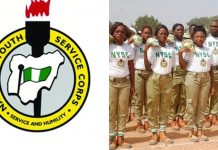Table of Contents
Physics Examination Questions for Senior Secondary School (SS1)
If you’re searching for Physics Examination questions and answers for senior secondary school students,we’ve got you covered.This page contains Physics exam questions and possible answers for SS1 Students. If you need Physics questions for SS2 and SS3, Kindly check the links below. For answers to this Physics Exam Questions kindly contact us using the contact us page, we will respond to your query as soon as possible.
temperature change (d)thermometer
termed (a) linear expansivity (b)volume expansivity (b)osmosis (c)expansion of
solid (d)length expanding
skin is termed (a) Solid expansion (b)cracking (c) density
(d) surface tension
reliable nature of the human body (d)sensitivity of the human body
application of (a) tension (b)surface tension (c)density (d)friction and viscosity
(c)Ampere(d)kinetic energy
(b)heat (c)energy (d)power
thermometer
termed (a)radiation (b)convection (c)transfer of heat (d) conduction
determine the elastic stiffness (a) 500 (b)300 (c)373 (d)273 (e)None of the above
to as (a) power of heat (b)heat energy (c)energy (d) heat content
400 meter calculate the force applied to overcome the work (a) 100N (b) 300N
(c)290N (d)None of the above
SECTION B (THEORY)
to the horizontal, given that AB is 3m B. state the law of parallelogram of vectors
direction of the vectors if :
radiation collectors (b) make a well labeled diagram of one listed above in 3a
FIRST TERM EXAMINATION FOR 2019/2020 SESSION
SUBJECT: Physics
CLASS: S S 2
TIME: 2 hours
INSTRUCTION: Answer all questions
SECTION A:
- All of these are scalar quantities except (a) Temperature (b) Speed (c) Momentum (d) Distance
- The S.I unit of acceleration due to gravity is _____
- A mango fruit drops to the ground from the top of its tree which is 10m high. How long does it take to reach the ground? (a) 2.5 sec. (b) 10 sec. (c) 2.2 sec (d) 2 sec.
- For a projectile, the maximum range is obtained when the angle of projection is (a) 300 (b) 900 (c) 450 (d) 600
- The single force which acting alone will have the same effect in magnitude and direction as two or more forces acting together is called ____
- The S.I unit of momentum is (a) NM (b) m/s (c) KM/J (d) M2
- The 3rd equation of motion is given by _____ (a) V = U + 1/2 at2 (b) V2 + U2 (c) V = U + at (d) V2 = U2 + 2as
- The examples of stable equilibrium are; except (a) A cone resting on its base (b) A ball in the middle of a bowl (c) An egg resting on its side (d) A racing car with lo C. G and wide base
- Which of the following is not a vector quantity? (a) Speed (b) Acceleration (c) Electric field (d) Force
- The slope of a straight line displacement time graph indicates ____ (a) Uniform speed (b) Uniform acceleration (c) Distance (d) Uniform Velocity
SECTION B: THEORY
Instruction: Answer any four questions you know
- A projectile is first with initial velocity of 80 m/s at angle of 300 with the horizontal. Calculate
(a) Time of flight (b) The Maximum height (c) The range
- Define the following with 4 examples each
(i) Scalar quantities (ii) Vector quantities
- Define the following
(i) Stable equilibrium (ii) Centre of gravity (iii) Velocity
4(i). Calculate the time it takes a piece of stone thrown vertically upwards with a velocity 20 m/s, to reach its maximum height. [g = 10m/s2]
- Differentiate between speed and velocity
- State the principle of moment
- If a force P of 40N acts in the direction due East and another force Q of 30N acts in the direction due North, calculate the resultant of these two forces.
FIRST TERM EXAMINATION FOR 2019/2020 SESSION
SUBJECT: Physics
CLASS: S S 3
TIME: 2 hours
INSTRUCTION: Answer all questions in this section A
- The maximum displacement of particles of a wave from their equilibrium position is called ______ (a) Wave velocity (b) Amplitude (c) Wave length (d) Frequency
- Which of the following is not a mechanical wave (a) Waves in a closed pipes (b) Radio wave (c) Water waves (d) Sound waves
- If V is the velocity of a wave, λ its wave length and T its period, the V, λ and T are related by t he expression (a) λ = v/T2 (b) V = λT (c) λ = VT (d) V = T/λ
- An image which can be formed on a screen is said to be (a) Vertical (b) Inverted (c) Real (d) Erect
- What will be the number of images forms when two mirrors are inclined at an angle 900 (a) 3 images (b) 1 images (c) 6 images (d) 4 images
- The centre of the sphere of which the mirror form a part is called _____
- The direction of a light ray changes as it passes from one medium to another. The phenomenon is called ______ (a) diffraction (b) Reflection (c) Refraction (d) Dispersion
- For correcting long sight defects in the human eye we require a (a) Converging lens (b) Diverging lens (c) Microscope (d) All of the above
- The three primary colours are (a) Green, blue and yellow (b) Red, Black and white (c) Red, Green and Blue (d) Green, Blue and black
SECTION B:
Instruction: Answer any four questions you know
- With the help of a ray diagram, list the characteristic of image form when the object is beyond C
- Define the following terms (i) Wave length (ii) Amplitude (iii) Frequency (iv) Period (v) Self-heminous
- A radio station broadcast at frequency of 600 KHZ. If the speed of light in air is 3×108m/s, calculate the wave length of the radio wave
- What is wave
- State the laws of refraction
- An object is placed 10cm in front of a concave mirror whose radius of curvature is 12cm. calculate the position and magnification of image produced.
- Explain the following
(i) Mirage
(ii) Critical Angle
- List any six optical features of the eye
For answers to this Physics Exam Questions kindly contact us using the contact us page, we will respond to your query as soon as possible. OR You can send a mail to [email protected]
RELATED PHYSICS STUDY QUESTIONS




